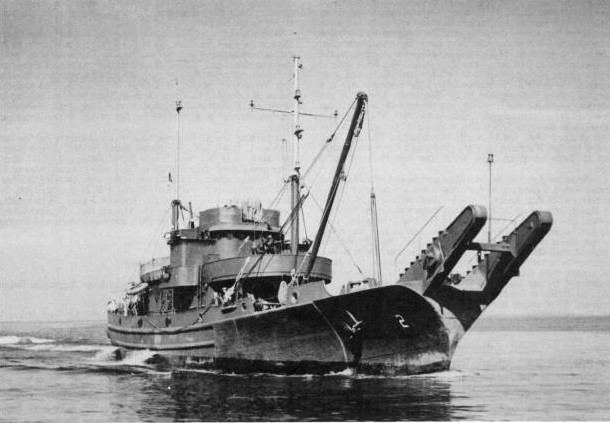 | ||
The Aloe class net laying ships were a class of thirty-two steel-hulled ships built prior to World War II. The lead ship, USS Aloe, was laid down in October 1940 and launched the following January; the final member, USS Yew, was launched in October 1941. They were assigned tree and plant names in alphabetical order, but eight ships (in order Cottonwood, Dogwood, Fir, Juniper, Maple, Poplar, Sycamore, and Walnut) were renamed prior to launching, producing discontinuities in the name order. These ships were originally classed as YN and numbered 1-32, but were reclassified and renumbered in 1944 as AN-6 through AN-37.
These ships had a unique appearance with a pair of "horns" jutting out from either side of the bow, each functioning as a fixed crane with a capacity of 22 short tons (20 t). They were powered by a pair of diesel engines which provided electricity for both propulsion and lifting machinery; there were also two auxiliary diesels and an evaporator for fresh water. Between the "horns" was an opening through which nets could be hauled, bridged by a catwalk.
All members of this class survived the war though USS Mahogany was caught in a typhoon in September 1945 and decommissioned the following year. Three ships were transferred to the French Navy in 1944 and another three were so transferred in the 1960s; two others went to the Turkish and Ecuadoran navies respectively. Three others were retained for various purposes, while the remainder were put into the reserve fleet shortly after the war.
